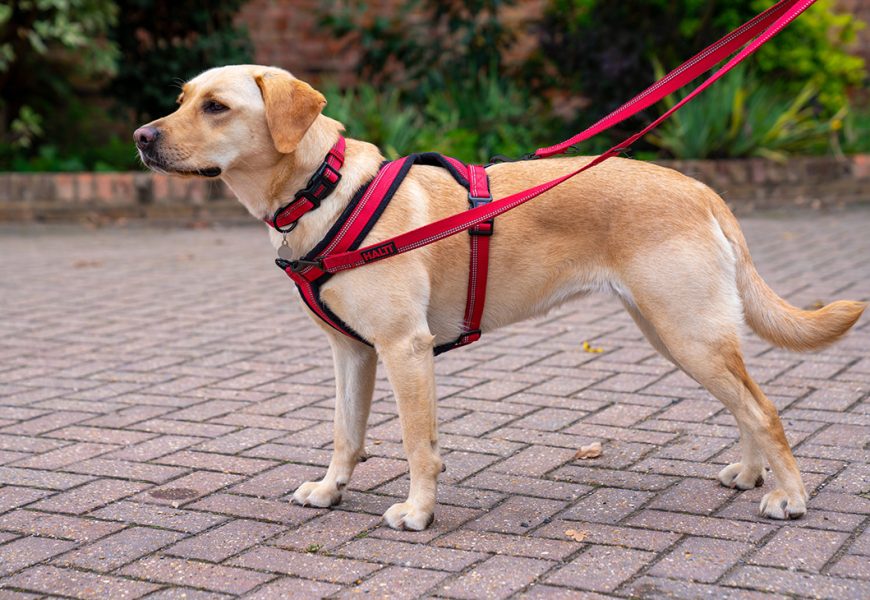Choosing the perfect harness for your dog can seem daunting with the endless options available, especially with so many designs tailored for different breeds, sizes, and activity levels. But understanding the various harness types, materials, and fitting techniques can make this process much more straightforward. Each harness type offers unique benefits, catering to dogs with specific needs, from controlling pulling to ensuring comfort for long walks. By focusing on these aspects, you ensure that your dog is safe, comfortable, and happy on every walk. In this guide, we’ll break down everything you need to know for making an informed decision that suits both you and your furry friend perfectly.
Understand Different Harness Types
When selecting the perfect harness, it’s essential to know the purpose and suitability of each type to match your dog’s unique needs. A back-clip harness, which has a clip on the dog’s back, is ideal for smaller dogs or those trained to walk without pulling, as it provides comfort without excessive control. Front-clip harnesses, designed with the clip on the chest, work especially well for larger dogs prone to pulling. This front attachment provides greater control by redirecting them toward you when they pull, making it highly effective for leash training and minimizing strain on the neck.
Dual-clip harnesses offer both front and back clips, combining the features of the previous types. This versatility allows you to switch between attachment points based on your dog’s behavior, needs, and training progress. Additionally, a step-in harness is a great option for dogs who dislike things going over their heads, providing ease for both the dog and the owner during the harnessing process. Each of these types has specific benefits, but understanding your dog’s temperament and behavior will guide you toward finding the perfect harness fit that meets their comfort and control requirements.
Measure for a Custom Fit
Getting the perfect harness fit is crucial for your dog’s comfort and safety, as an improper fit can lead to discomfort or escape. Begin by measuring your dog’s chest girth, as this is the widest part of their body, located just behind the front legs. This measurement is essential for determining the right size harness. Additionally, measure the neck to ensure the harness won’t press uncomfortably on their throat or impede breathing.
While harnesses come in general sizes, knowing your dog’s exact measurements guarantees a better fit tailored specifically to them. Check the manufacturer’s sizing guide, as sizing can vary significantly between brands and it’s important to follow their recommendations for the best results. Ensuring your dog’s harness fits snugly without restricting movement or causing chafing is essential for their overall well-being. A properly fitting harness prevents discomfort and keeps the harness in place, minimizing the need for frequent adjustments during your outings. Remember, an ideal fit is neither too loose nor too tight; it strikes a perfect balance that enhances both comfort and security, leading to a more enjoyable experience for you and your furry friend.
Select the Right Material
The material of the perfect harness should suit your dog’s lifestyle, skin type, and the climate in which you live. Most harnesses are made from nylon, polyester, leather, or mesh, each with specific benefits that cater to different needs. Nylon and polyester harnesses are renowned for their durability, affordability, and ease of cleaning, making them ideal for dogs that love outdoor adventures and often encounter dirt or mud. These materials hold up well over time, ensuring longevity for frequent users.
However, leather harnesses offer a more comfortable, classic look that ages beautifully with use, providing extra comfort for dogs with sensitive skin. They tend to be soft and flexible, making them an excellent choice for dogs that may experience irritation from synthetic materials. If your dog has skin issues, mesh harnesses are gentle, lightweight, and breathable, making them an ideal choice for summer walks. Their breathable nature helps prevent overheating, which is particularly important during warmer months.
Keep in mind, though, that mesh may not be as durable as other materials if your dog is highly active or enjoys vigorous play. Therefore, it’s essential to assess your dog’s behavior and typical activities when choosing a material. By selecting a harness made from the right material, you align your choice with your dog’s comfort and activity level, ensuring that their perfect harness is built to last and meets their specific needs.
Comfort Features Matter
Comfort-focused features in a perfect harness help keep your dog happy and eager for their walks. Padded harnesses, for instance, add a layer of comfort that protects your dog’s skin from friction. This is especially useful for short-haired breeds that may experience discomfort from direct contact with the harness straps.
Adjustable harnesses allow a customizable fit, making them a great choice if your dog is growing or has a unique body shape. Reflective stitching or materials are additional comfort features that increase visibility during evening walks, ensuring both safety and comfort.
If your dog tends to slip out of their harness, look for models designed specifically for escape-prone dogs. These harnesses often feature additional straps around the torso, helping keep them secure even with extra wiggles or attempts to back out. Every comfort-oriented feature brings you closer to finding that perfect harness fit for your dog.
Consider Additional Accessories
Accessories can significantly enhance the practicality of the perfect harness. Some harnesses come with extra pockets, ideal for storing small essentials like treats or waste bags. For a cleaner grooming routine, consider pairing your dog’s harness with a paw trimmer for dogs to maintain neat paws that won’t snag or cause discomfort in the harness straps.
For those who enjoy nighttime walks, harnesses with built-in LED lights are an excellent option, boosting visibility and keeping your dog safe in low-light conditions. Pairing your harness with a matching leash can add a touch of style, especially if you’re heading to dog-friendly events or areas.
Accessories may not always be necessary but can make a noticeable difference. Reflective or LED lights, additional leash clips, and even matching accessories add versatility, functionality, and flair, elevating any harness to the perfect harness.
Final Thoughts on Finding the Perfect Harness
Finding the perfect harness for your dog involves considering various factors, such as type, fit, material, and comfort. Each of these aspects plays a crucial role in ensuring your dog enjoys their harness and feels secure during walks. Knowing your dog’s unique needs will simplify the selection process, making it easier to narrow down your choices and select the most suitable option.
Consider how your dog behaves on walks and their overall activity level, as this can influence which harness type is best. For instance, if your dog tends to pull, a front-clip harness might be ideal. If they have sensitive skin, a soft leather or padded harness could be more comfortable. Remember, the perfect harness should strike a balance between practicality, comfort, and safety. A well-fitted harness allows for freedom of movement while keeping your dog secure.











